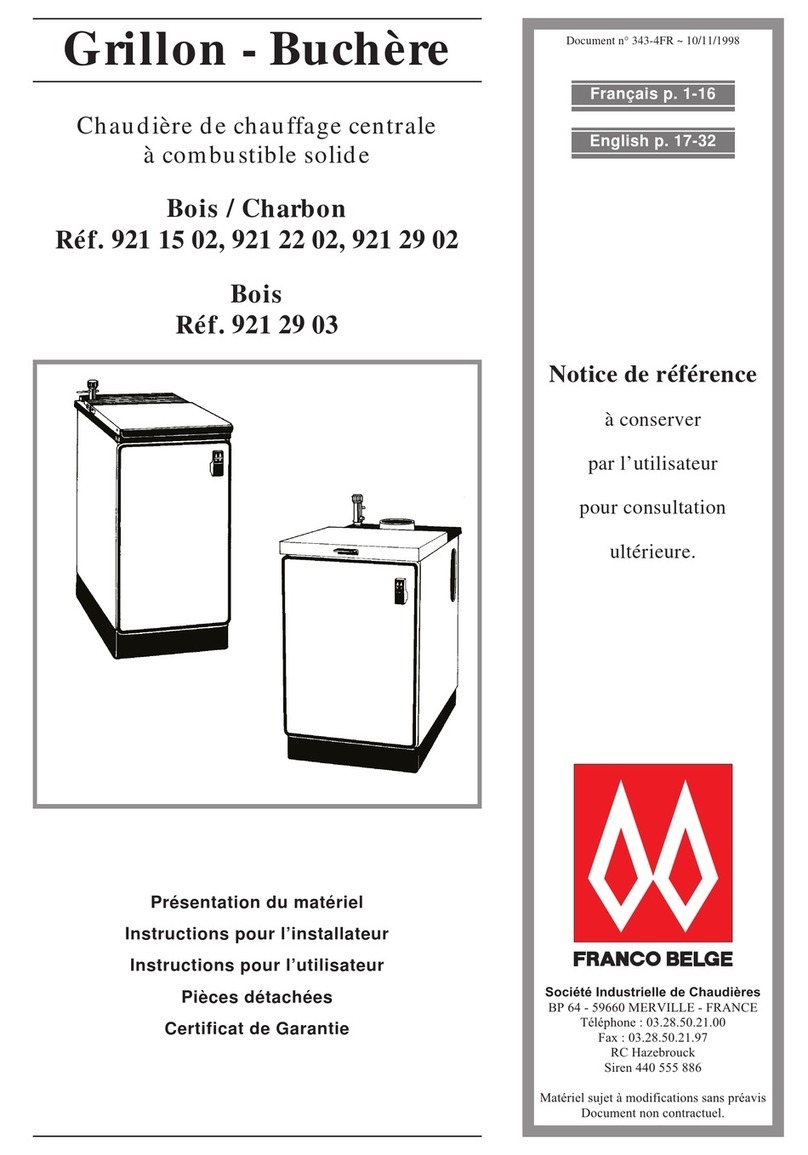
COLIBRI REF. 971.14.11 Z - 971.21.11 Z
Test for adequacy of air supply is to-:
Set the oil fired appliance going, close all doors and windows in the room, turn on the
extractor fan to its maximum capacity, light the open fire and let it get well esta lished.
Test for adequate maintenance of chimney vacuum on the appliance, oth efore and after the
extractor fan is turned on, with the open fire going.
During the tests the flue vacuum of the oil fired appliance should e measured to see if there
is any noticea le reduction eyond that called for in these instructions.
WARNING
Instructions on ventilation must e adhered to.
4-4a WATER HEATING
Coli ri Boilers are all high water content oilers and as such can easily replace solid fuel
installations with the minimum of complication.
Before you start to install a water heating Coli ri Boiler remem er that the central heating
system must comply with BS:5449 part 1.
If a com ined heating and domestic hot water system is to e used, then a dou le feed indirect
hot water storage cylinder to BS:1556 part 1 should e used.
In order to prevent the uild up of scale and corrosion a suita le inhi itor should e used.
The system must e correctly vented.
The height differential etween the header tank and the appliance must not exceed 15.2
metres (50 feet) Where a common return is used an injector tee must e incorporated into the
system to ensure adequate primary circulation when the circulating pump is operating. (see
detail in FIG16)
The system must incorporate a gravity circuit which will normally heat the domestic hot water
and an un-valved radiator or radiators with an output of at least equal to the minimum water
heating output of the appliance. (see technical spec for details)
When the appliance is not connected to a domestic hot water system a gravity system must
still e used with the unvalved radiator(s) on the gravity circuit having a total output of at
least the minimum output of the appliance, this is to prevent oiling in case of pump failure.
Min. pipework in the primary circuit must e 28mm diameter and the gravity flow pipe must
rise continuously from the oiler to the open vent.
Typical systems are shown in illustrations FIGS 15,16,18,19 and 20
Connect the heating system to the oiler ensuring that the primary flow pipe rises
continuously from the appliance to the vent.
Fill the system with water and check for leaks and air locks.
APPLIANCE CONTROLS
The appliance can e controlled via -:
The oil control valve which is fitted with-:
1. A manually operated oil flow control kno
2. A manually set, automatic thermostat, uilt into the oil control valve.
3. A manually and automatically operated oil cut off lever, uilt into the oil control valve.
4. An automatically operated safety shut off thermostat, uilt into the oil control valve which
trips the oil flow cut off lever mentioned in 3 a ove.
The valve operates as follows, it has flow control potential from mini to maxi via six
graduations and so the appliance can e manually controlled from MINI to MAXI y simply
turning the flow control kno (1 a ove), in addition it also has a water sensing thermostat and
an automatic safety oil cut off device should the appliance water temperature exceed 90
degree C.
The water sensing thermostat will automatically control the oiler water temperature at what
ever setting is required up to a maximum of 70 degree C. (2. a ove) and it is operated y a
control kno situated alongside the oil flow control kno .




























